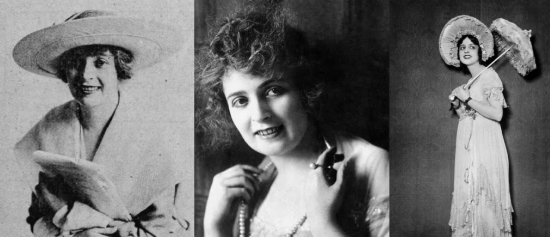Who is myrtle gonzalez ?
Introduction to Myrtle Gonzalez
Myrtle Gonzalez, renowned as the “First Latin American Movie Star,” emerged as a trailblazer in the early Hollywood era. Born on September 28, 1891, in Los Angeles, California, to Mexican immigrant parents, Myrtle’s journey to fame unfolded as a remarkable tale.
Table of Contents
Demonstrating a passion for performance from a young age, Myrtle showcased her singing and dancing talents at local events, earning recognition for her exceptional abilities. Her breakthrough moment occurred when director Thomas Ince discovered her during a local theater production.
At the tender age of 19, Myrtle ventured into the world of cinema with her debut in the silent western film “The Invaders” (1912), marking the inception of her illustrious Hollywood career. Over the subsequent decade, she graced the screen in more than 80 films, including notable works like “The Easter Lily” (1915), “The Serpent” (1916), and “One Law for Both” (1917).
Myrtle’s allure and charisma quickly endeared her to audiences, establishing her as one of the era’s most beloved actresses. Recognized for her vivacious personality and comedic timing, she earned the affectionate moniker “La Única” or “the unique one.”
Beyond her acting prowess, Myrtle stood as a pioneer for women in the film industry. In an era marked by restrictive gender roles for female performers, she courageously embraced dynamic roles that defied prevailing stereotypes.
Early Life and Career Beginnings
Born on September 28, 1891, in Los Angeles, California, Myrtle Gonzalez was the youngest of five children born to Mexican immigrants Francisco Gonzalez and Maria Rodriguez. Her father worked as a carpenter, while her mother devoted her time to homemaking.
Growing up amidst the cultural richness of Los Angeles, Myrtle experienced a diverse environment, learning Spanish from her parents and English from her schoolmates in their multicultural neighborhood.
At the tender age of 14, Myrtle’s life took a transformative turn when a traveling vaudeville troupe performed at her school. Captivated by the stage, she successfully persuaded her parents to allow her to join the troupe as an assistant. This encounter ignited her passion for acting, setting her on a course to pursue it as a lifelong career.
Career Beginnings
Embarking on her artistic journey, Myrtle Gonzalez began showcasing her acting prowess in local theaters throughout Los Angeles, diligently refining her skills on the stage. Additionally, she pursued a passion for dance, mastering various styles including ballet and flamenco.
At the youthful age of 20 in 1911, Myrtle achieved a significant milestone by securing her inaugural film role in “The Immigrant,” under the direction of D.W. Griffith. While her part was a modest supporting role, this cinematic debut marked the initiation of her prosperous career in Hollywood.
Rise to Fame in Silent Films
Myrtle Gonzalez, hailed as “The Virgin of the Silver Screen,” achieved prominence as a Mexican-American actress in the early 1900s, captivating audiences with her compelling performances in silent films. Despite initially facing limited opportunities for Hispanic actors and commencing her career with minor roles, Myrtle’s unwavering talent and determination propelled her to become one of the era’s most sought-after actresses.
Born on September 28, 1891, in Los Angeles, California, Myrtle was raised in a diverse community by her Spanish mother and American father. Nurturing a passion for acting from a young age, she frequently showcased her skills in local theater productions. Film producer Mack Sennett recognized her natural grace and poise, offering her a contract with Keystone Studios.
In 1913, Myrtle marked her cinematic debut with the short film “Giving Them Fits,” laying the foundation for a prolific career spanning over two decades. Renowned for her expressive eyes and the ability to convey emotions without words, she progressed to more significant roles in feature films like “Love’s Forgiveness” (1915) and “The Silent Witness” (1917).
However, it was her collaboration with the esteemed comedian Roscoe ‘Fatty’ Arbuckle in “Fatty’s Plucky Pup” (1915) that catapulted Myrtle to widespread recognition.
Personal Life and Relationships
Myrtle Gonzalez’s personal life and relationships played a pivotal role in shaping both her identity as an actress and as an individual. Born on September 28, 1891, in Los Angeles, California, to Mexican parents, her father’s background as a stage actor and her mother’s singing career laid the foundation for Myrtle’s early affinity for performance.
Her familial bonds were strong, and she often accompanied her parents to their performances, fostering her love for the craft. At the age of 16, Myrtle made her stage debut, earning acclaim for her acting skills. However, it was her foray into the film industry that brought her widespread recognition.
On the romantic front, Myrtle experienced two marriages in her lifetime. Her first union was with silent film director George Marshall in 1913, a partnership that lasted six years before ending in divorce due to personal differences. In 1929, she entered matrimony once again, this time with cinematographer Allen McNeil. Their marriage endured until his passing in 1950.
Despite facing challenges in her love life, Myrtle maintained a positive outlook and unwavering dedication to her career. She cultivated robust friendships within the film industry, forming enduring connections with fellow actresses Dolores Del Rio and Ramona Novarro.
Legacy of Myrtle Gonzalez
Myrtle Gonzalez’s enduring legacy serves as a wellspring of inspiration for generations of actors and actresses within the film industry. As a trailblazing Mexican-American artist, she stands among the pioneers who paved the way for future Latinx performers, dismantling barriers to representation in the entertainment world.
Born on September 28, 1891, in Los Angeles, California, Myrtle’s trajectory toward stardom seemed predestined given her familial ties to the theater—her mother an actress and her father a respected theater manager. Her early exposure to the performing arts fueled a profound love for the craft, with Myrtle making her stage debut at a remarkable age of three, a passion she continued to pursue throughout her formative years.
Upon graduating from high school, Myrtle dedicated herself wholeheartedly to a full-time acting career. She navigated small roles in silent films before catching the discerning eye of movie producer Thomas Ince. Recognizing her untapped potential, Ince cast Myrtle in the lead role of his film “A War-Time Widow” (1915), propelling her into the echelons of stardom and solidifying her status as one of Hollywood’s leading ladies.
Myrtle’s allure, charisma, and innate acting prowess swiftly endeared her to audiences, earning her the moniker “The Virginian Beauty” for her role as Milly Erne in “The Virginian” (1914). Her impactful contributions continue to resonate, leaving an indelible mark on the landscape of diversity and representation in the film industry.
Controversies and Scandals
Celebrities often find themselves entangled in controversies, and Myrtle Gonzalez, despite her thriving Hollywood career, was no stranger to such tumult in her personal life.
One notable controversy involved her entanglement with director Herbert Blaché, who was then married to Alice Guy-Blaché, an early cinema pioneer. The affair between Myrtle and Blaché led to the director’s divorce from Alice in 1922, causing a significant uproar in Hollywood and tarnishing both their reputations.
Throughout her career, Myrtle faced persistent controversies regarding her Mexican heritage. Despite being a Los Angeles native with Spanish ancestry, she encountered discrimination based on her appearance and surname. In an era where acceptance of Mexican Americans in Hollywood was limited, Myrtle struggled against stereotypical roles like the “exotic temptress” or “fiery Latina.”
Rumors surrounding Myrtle’s love life added another layer of intrigue. Known for her flirtatious demeanor on set, she was romantically linked to various co-stars, including a rumored relationship with the prominent actor Francis X. Bushman, then one of Hollywood’s biggest stars. While never officially confirmed, the alleged romance caused a scandal, particularly as Bushman was married at the time.
Influence on Hollywood and Pop Culture
Myrtle Gonzalez, renowned as “the American Beauty,” graced the silent film era in the early 20th century, leaving an enduring imprint on Hollywood and pop culture that resonates to this day.
Her ascent to stardom commenced with a remarkable debut in the 1914 film “The Count of Monte Cristo.” Myrtle’s innate beauty and magnetic on-screen presence swiftly captivated audiences and garnered acclaim from both critics and fans. With each subsequent role, her popularity soared, establishing her as one of the era’s most coveted actresses.
Myrtle Gonzalez’s impact on Hollywood is particularly notable in her pioneering efforts to redefine the portrayal of female characters in films. Prior to her, women were often confined to roles as damsels in distress or femme fatales. However, Gonzalez infused her characters with depth and complexity, challenging societal norms and laying the groundwork for future female leads.
Beyond her contributions to gender representation, Gonzalez emerged as a trailblazer for Latinx actors in Hollywood. As one of the earliest successful Mexican-American actresses, she shattered barriers, creating opportunities for minority performers and challenging stereotypes. Her presence in an industry dominated by white actors signaled a significant shift towards diversity and inclusion.
Gonzalez’s influence extended far beyond Hollywood; her impact reverberated in pop culture of her time. Admired for her beauty, she became an idol whose signature style inspired fashion trends embraced by fans across America. Her legacy as “the American Beauty” remains an indelible part of cinematic and cultural history.
Remembering Myrtle Gonzalez: Honors and Tributes
Recognized as the inaugural Latin American movie star, Myrtle Gonzalez’s legacy endures as a celebrated and honored figure in the world of cinema. Despite the brevity of her successful Hollywood career, she made an indelible impact, creating a path for upcoming generations of Latino actors.
This segment delves into the various accolades and tributes bestowed upon Myrtle Gonzalez throughout the years. From prestigious awards to commemorative events, it offers an exploration of how the film industry continues to acknowledge and preserve her contributions, ensuring that her influence is remembered and revered.
- Posthumous Awards
Despite her life being cut short at the age of 27, Myrtle Gonzalez’s remarkable talent did not go unnoticed. Even after her passing, she received posthumous recognition for her contributions to several films. Notably, in 1919, Photoplay Magazine honored her with a Bronze Plaque for her exceptional performance in “The Mexican,” hailed as one of her finest roles.
Furthermore, in 1920, Alma de Mexico magazine bestowed upon her an honorary award, recognizing Myrtle as “the most beautiful woman in Mexico.” These posthumous accolades stand as enduring testaments to Myrtle Gonzalez’s lasting impact on audiences in both American and Latin American realms.
- Star on the Hollywood Walk of Fame
In 1960, Myrtle Gonzalez was bestowed with a star on the Hollywood Walk of Fame, a prestigious accolade reserved for individuals who have made remarkable contributions to the entertainment industry. This honor stands as a testament to her enduring impact and recognition within the realm of entertainment.
Conclusion
In summary, Myrtle Gonzalez stands as a trailblazing actress who left an indelible mark on the formative years of Hollywood, contributing significantly to the shaping of the film industry. Despite encountering numerous challenges and hurdles, her unwavering dedication to her craft resulted in a lasting legacy that serves as an enduring inspiration for successive generations of actors and actresses.
Undeniably, Myrtle’s impact on the history of cinema is profound, firmly establishing her as a pivotal figure in the world of entertainment. Through her exceptional talent, unyielding determination, and fervent passion for acting, Myrtle Gonzalez will forever be remembered as one of the inaugural Mexican-American stars in the annals of Hollywood.






